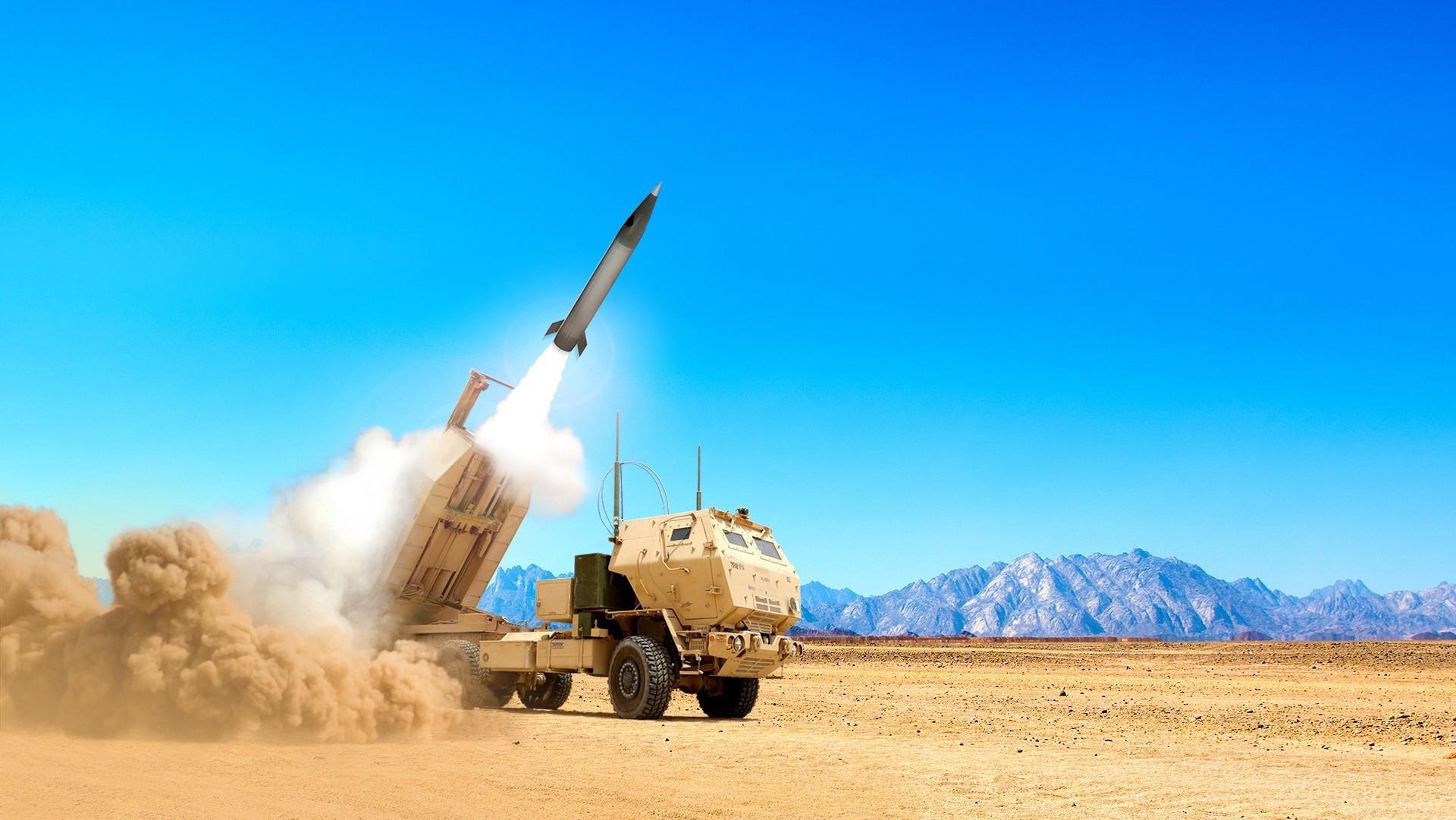
The Precision Strike Missile (pictured) is the first of three new weapon systems expected to come online to increase the range of the U.S. Army’s striking power markedly.
A five-year, multibillion-dollar push by the U.S. Army was expected by the end of September to result in two new milestones for the armed service’s long-range precision fires portfolio.
Artillery commanders expected to enter fiscal 2024 with operational status declared for the first battery delivered by the Midrange Capability program and the first battery fielded by the Precision Strike Missile (PRSM) program. A series of test failures postponed a similar milestone for the Long-Range Hypersonic Weapon (LRHW) program until at least year-end.
- Despite setbacks, LRHW is set to be deployed before 2024
- Precision Strike Missile and Midrange Capability are poised for operational capability
For the first time in the service’s history, however, Army leaders expected to possess two batteries of ground-launched conventional missiles with a range significantly greater than the 300-km (186-mi.) limit of the MGM-140 Army Tactical Missile System. For decades, the Army has relied solely on Air Force and Navy air assets to intercept tactical targets on the ground beyond the front lines.
Now the Army’s strategic fires battalion embedded in the Multi-Domain Task Force (MDTF) is preparing to attack a wide variety of long-range targets—including surface ships, command-and-control sites and an enemy’s long-range missile launchers—without direct support from the other armed services.
At least four such battalions are slated to be equipped to launch PRSMs with a range up to 650 km from an M142 High-Mobility Artillery Rocket System or ground-launched BGM-109 Tomahawk cruise missiles at targets beyond 1,600 km from a Typhon launcher. The latter also has the ability to launch a shorter-range, anti-ship version of the Raytheon SM-6 missile. Eventually, the Army plans to replace the Tomahawk and SM-6 with a new Increment 4 version of the PRSM, which features a rocket-ramjet propulsion system extending the missile’s range to more than 1,000 km.
Finally, a long-awaited test by the LRHW program is scheduled by year-end. If the Joint Flight Campaign-2 (JFC-2) test is successful, Lockheed Martin would be cleared to deliver a third battery for the strategic forces battalion. The program’s Dark Eagle missile uses a maneuvering, hypersonic glide vehicle to dodge missile defense sensors and interceptors, rendering them potentially less likely to be shot down even when fired at well-defended targets more than 2,800 km away.
The LRHW program represents the Army’s answer to China’s growing arsenal of maneuverable, long-range hypersonic weapons. In addition to the medium-range DF-17 hypersonic glide vehicle fielded in 2020, a U.S. intelligence leak in April revealed that the Chinese Army had also successfully tested the DF-27, a hypersonic glide vehicle with intermediate or intercontinental range.
But the four-year-old U.S. program has failed since June 2022 to complete a successful flight test. The design of a Navy-developed Common Hypersonic Glide Body was validated during a March 2020 test, several ground tests have verified that a 34.5-in., two-stage booster works as expected, and the Army received the first launcher for the Dark Eagle missile two years ago. Despite successful tests of each component, the integrated system failed in the June 2022 test. The Army then aborted two more attempts to launch a test missile in March and September of this year.
“This is where you learn that integration—it might sound simple—but it’s where the challenges are,” Doug Bush, assistant secretary of the Army for acquisition, logistics and technology, told reporters on Sept. 19.
In June 2022, the test was foiled by an errant grounding wire that caused a fault in the glide body’s navigation system, leading it to reenter the atmosphere at the wrong angle. Fifteen months later, another test was aborted at nearly the last second.
“If you can imagine a countdown for a rocket launch, something flagged in the system and said ‘stop here,’ and that was, like, 2 sec. away,” Bush said.
The Army launched the LRHW program on a fast track. A normal development schedule could take as long as 10 years to field a weapon as complicated as a rocket-launched, hypersonic glide vehicle. Instead of starting with a test of only the booster in the new launcher, the JFC-2 test combined several normally separate events into a single launch. The result is a series of testing setbacks but so far only a slight delay to the original fielding schedule.
“I think a three-month [delay] in the grand scheme of things is not that big a deal, but that’s for others to judge,” Bush said.
